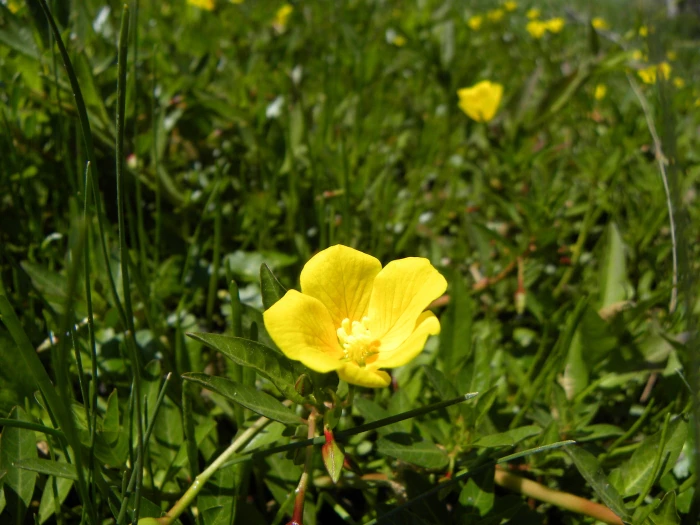Floating Primrose-Willow
(Ludwigia peploides)
Floating Primrose-Willow (Ludwigia peploides)
/
/

© María Eugenia Mendiola González
CC BY-SA 4.0
Image By:
© María Eugenia Mendiola González
Recorded By:
Copyright:
CC BY-SA 4.0
Copyright Notice:
Photo by: © María Eugenia Mendiola González | License Type: CC BY-SA 4.0 | License URL: http://creativecommons.org/licenses/by-sa/4.0/ | Uploader: marumg | Publisher: iNaturalist |








Estimated Native Range
Climate Requirements for Keller, Texas
| This Plant | Your Site | Plant Suitability for Your Location | ||
|---|---|---|---|---|
| • Precipitation | 0" - 152" | 35" | Your precipitation may be insufficient for this plant. Irrigate N" / year. | Irrigate N" / year |
| • High Temp. | 55°F - 108°F | 96°F | Your summer temperatures are normal for this plant. | Excellent |
| • Low Temp. | 4°F - 73°F | 33°F | Your winter temperatures are normal for this plant | Excellent |
This plant should grow well at your location with about N inches per year (Y minutes per month) of irrigation.
Summary
Ludwigia peploides, commonly known as Floating Primrose-Willow, Creeping Water Primrose, or simply Water Primrose, is a perennial herb native to wetland habitats including marshes, pond margins, and slow-moving waterways in the Americas and Australia. It typically grows to a height of 1-2 feet (0.3-0.6 meters) and spreads vigorously by rooting at the stem nodes. The plant features bright yellow, cup-shaped flowers that bloom in the summer and fall, adding a splash of color to aquatic settings. The flowers are quite showy, making it a popular choice for water gardens and ornamental ponds.
Floating Primrose-Willow thrives in full sun to part shade and prefers very slow draining clay, loam, or sandy soils that are consistently moist or even submerged. It is highly adaptable to various water conditions, from shallow standing water to periodically flooded areas. While it is valued for its ornamental flowers and ability to cover large areas quickly, Ludwigia peploides can become problematic due to its aggressive growth habit, potentially choking out native plants and disrupting aquatic ecosystems. It is considered invasive in some regions, so gardeners should consult local regulations before planting. In areas where it is not invasive, it can be used for erosion control along water bodies. Regular monitoring and management may be necessary to prevent unwanted spread.CC BY-SA 4.0
Floating Primrose-Willow thrives in full sun to part shade and prefers very slow draining clay, loam, or sandy soils that are consistently moist or even submerged. It is highly adaptable to various water conditions, from shallow standing water to periodically flooded areas. While it is valued for its ornamental flowers and ability to cover large areas quickly, Ludwigia peploides can become problematic due to its aggressive growth habit, potentially choking out native plants and disrupting aquatic ecosystems. It is considered invasive in some regions, so gardeners should consult local regulations before planting. In areas where it is not invasive, it can be used for erosion control along water bodies. Regular monitoring and management may be necessary to prevent unwanted spread.CC BY-SA 4.0
Plant Description
- Plant Type: Herb
- Height: 1-2 feet
- Width: 3-6 feet
- Growth Rate: Rapid
- Flower Color: Yellow
- Flowering Season: Summer, Fall
- Leaf Retention: Deciduous
Growth Requirements
- Sun: Full Sun, Part Shade
- Water: High, Aquatic
- Drainage: Standing
Common Uses
Erosion Control, Water Garden
Natural Habitat
native to wetland habitats including marshes, pond margins, and slow-moving waterways in the Americas and Australia
Other Names
Common Names: Creeping Water Primrose, Water Primrose, Clovestrip, Floating Primrose
Scientific Names: Ludwigia peploides, Jussiaea californica, Jussiaea repens var. minor
GBIF Accepted Name: Ludwigia peploides